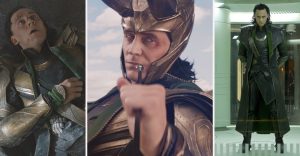Why Master Chief Never Revealed His Face In The Halo Games

Warning! Spoilers ahead for Halo episode 1.
While Master Chief may have already removed his helmet in Halo‘s premiere episode, he’s only rarely done so before, and there’s a good reason his face was never revealed in the games. The Halo TV show made it clear from its trailers that its Master Chief would be showing his face in the series, and its first episode delivered on that promise. This marks the most significant reveal of Master Chief’s face in Halo‘s history, as while the games have occasionally allowed the character to remove his helmet, his face has only rarely been glimpsed.
However, the very first episode of Halo saw Pablo Schrieber’s Master Chief remove his helmet and reveal his face in full. After fighting back against Covenant forces who have attacked a colony on the world of Madrigal, Master Chief and a team of UNSC Spartans are able to secure the powerful artifact the Covenant were trying to obtain. Contact with the artifact restores some of Master Chief’s erased memories, prompting him to defy his orders by sparing the life of Kwan Ha, the lone survivor of Madrigal.
This development saw Master Chief remove his helmet in order to gain Kwan’s trust, and his face remained exposed for a significant portion of Halo‘s first episode. The reveal of Master Chief’s face marks a slight departure from the way the character was handled in the video games, in which he rarely removed his helmet, and his face was only ever briefly glimpsed. However, the TV show breaking tradition doesn’t take away from the story as the reasons behind the story choice differ from the video games. The reason the Halo games never showed Master Chief’s face in full was not necessarily for story purposes, but rather to help with players’ immersion in the character.

By not fully revealing Master Chief’s face, the Halo games allowed for players to better project themselves into the role of the character as he could look like anyone under the helmet. This naturally made for easier immersion in the game’s world, as Master Chief remained a (mostly) faceless figurehead in which players could see themselves reflected. However, the Paramount+ Halo TV show takes a decidedly different approach, owing in large part to the very different medium it uses to tell its story.
With video games, immersion is key. Halo sought to spin an epic sci-fi story, and part of its success stemmed from the action-packed saga of stories the video game franchise chronicled. By mostly keeping Master Chief’s face under his helmet, the Halo games allowed players to imagine the character’s human appearance in whichever way they saw fit, but there was also a vague statement about the faceless and seemingly expendable nature of soldiers. By giving Master Chief a human story but not revealing his face, the Halo games encouraged players to think of the often thankless heroism of soldiers and the difficult situations they must overcome – under the helmet, Master Chief is expendable first, and human second.
Within the show, Halo‘s Spartans (including Master Chief) make up an elite part of UNSC, but the story told so far promises to explore the more human side of the protagonist. This not only makes the reveal of the Master Chief’s face make more sense within the context of the show, but it evidences the alteration of the approach of the show in relation to the video games. In the games, Halo only rarely afforded players a glimpse of Master Chief’s human side, but the show is a different matter entirely.
Halo will release new episodes Thursdays on Paramount+.
About The Author
















